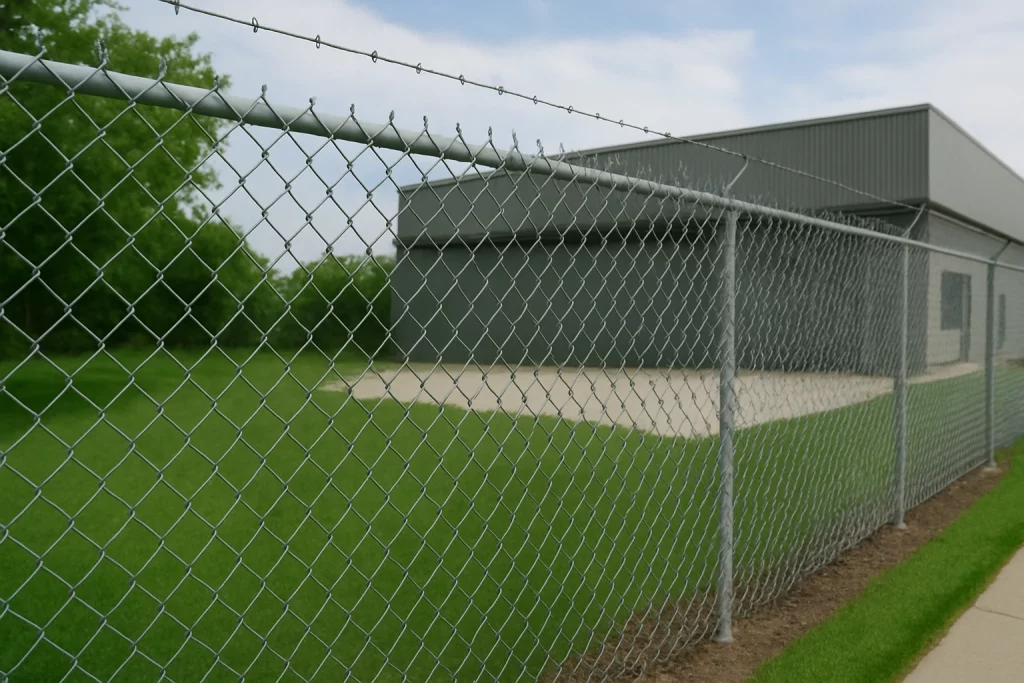Effective Fence Signage for Businesses plays an essential role in communication, safety, and brand visibility. Beyond providing protection, fences can also serve as information and identity tools. With thoughtful design and placement, signage helps businesses meet safety regulations while reinforcing professionalism and customer trust.
The Purpose of Fence Signage
Fence signage fulfills several functions that go beyond simple labeling:
Safety communication: Warns employees and visitors about restricted areas or hazards.
Compliance: Ensures the property meets OSHA and local safety requirements.
Brand promotion: Displays logos, slogans, and contact details for greater visibility.
Wayfinding: Helps guide vehicles and pedestrians to correct access points.
Proper signage transforms fences from passive barriers into valuable business assets.
Balancing Safety and Aesthetics
Signage should attract attention while maintaining a professional look. Using durable materials such as aluminum, vinyl, or steel ensures weather resistance and longevity. Reflective coatings and bold fonts improve readability in low-light conditions.
Pairing durable signs with sturdy fencing—such as a steel fence chicago—adds structure and reliability. Businesses can integrate their logo or color palette into the signage to align safety measures with their visual identity.
Regulatory Compliance and Safety Requirements
For companies operating in regulated industries, fence signage is not optional—it’s a compliance necessity. City zoning rules and federal standards require signs to display warnings, contact information, or permit numbers in specific areas.
Working with experienced Commercial fence contractors Chicago Illinois ensures that installations meet all code requirements. These professionals understand how to integrate warning and branding panels while adhering to visibility and placement regulations.
Types of Business Fence Signage
Different commercial environments demand different signage types:
Warning and safety signs: Indicate danger zones, electrical hazards, or restricted areas.
Branding panels: Reinforce identity with logos or color schemes.
Directional signage: Guides deliveries, visitors, and staff to correct locations.
Permit and inspection notices: Required for ongoing projects or municipal compliance.
Combining these types provides clarity, consistency, and a professional appearance.
Material and Design Considerations
Durability and legibility are key when designing outdoor signage. Quality materials extend lifespan and reduce maintenance costs:
Aluminum signs: Lightweight, rust-resistant, and suitable for permanent outdoor use.
Vinyl signage: Ideal for short-term promotions or temporary notices.
Steel-backed panels: Vandal-resistant and long-lasting, suitable for industrial facilities.
Pairing signage with vinyl fencing chicago il ensures visual harmony and minimal upkeep, creating a consistent appearance across property lines.
Placement Strategies for Maximum Visibility
Effective placement determines how well signage performs. Key recommendations include:
Position signs at eye level for intended audiences (drivers or pedestrians).
Ensure readability from primary access roads.
Avoid visual clutter by balancing spacing and alignment.
Keep contrast between background and lettering clear.
In high-traffic or industrial areas, chain link fences in chicago offer excellent support for signage, as their mesh structure allows simple mounting and consistent visibility.
Integrating Branding with Security
Fence signage should complement both branding and safety objectives:
Use consistent color schemes across signage and property elements.
Incorporate the company logo into warning or directional signs.
Select typography that balances readability and brand identity.
This dual approach reinforces trust and demonstrates a company’s attention to detail—an important factor for customers, partners, and regulators alike.
Cost and Maintenance Factors
Investing in high-quality signage materials and professional installation reduces long-term expenses. Aluminum and vinyl signs are affordable yet durable, while steel-backed systems offer extended service life in demanding conditions. Regular cleaning, inspection, and occasional repainting help maintain a professional look and ensure compliance with current regulations.
Partnering with experts helps businesses avoid future repair costs and ensure a cohesive, professional look across all fencing types.
External Resource for Guidance
For verified standards and design principles on workplace and facility signage, refer to the American National Standards Institute (ANSI) guidelines on safety and informational signs.
This official organization establishes recognized standards for sign colors, symbols, and readability across industries, supporting both compliance and design quality.
Conclusion
Fence signage is more than decoration—it’s a key communication tool for safety, branding, and professionalism. By choosing durable materials and appropriate placement, businesses can ensure compliance while strengthening their visual identity. Combining steel, vinyl, or chain link fencing with thoughtful signage turns functional barriers into brand assets. Partnering with experienced contractors and adhering to ansi standards ensures every sign serves its purpose effectively and stands the test of time.

